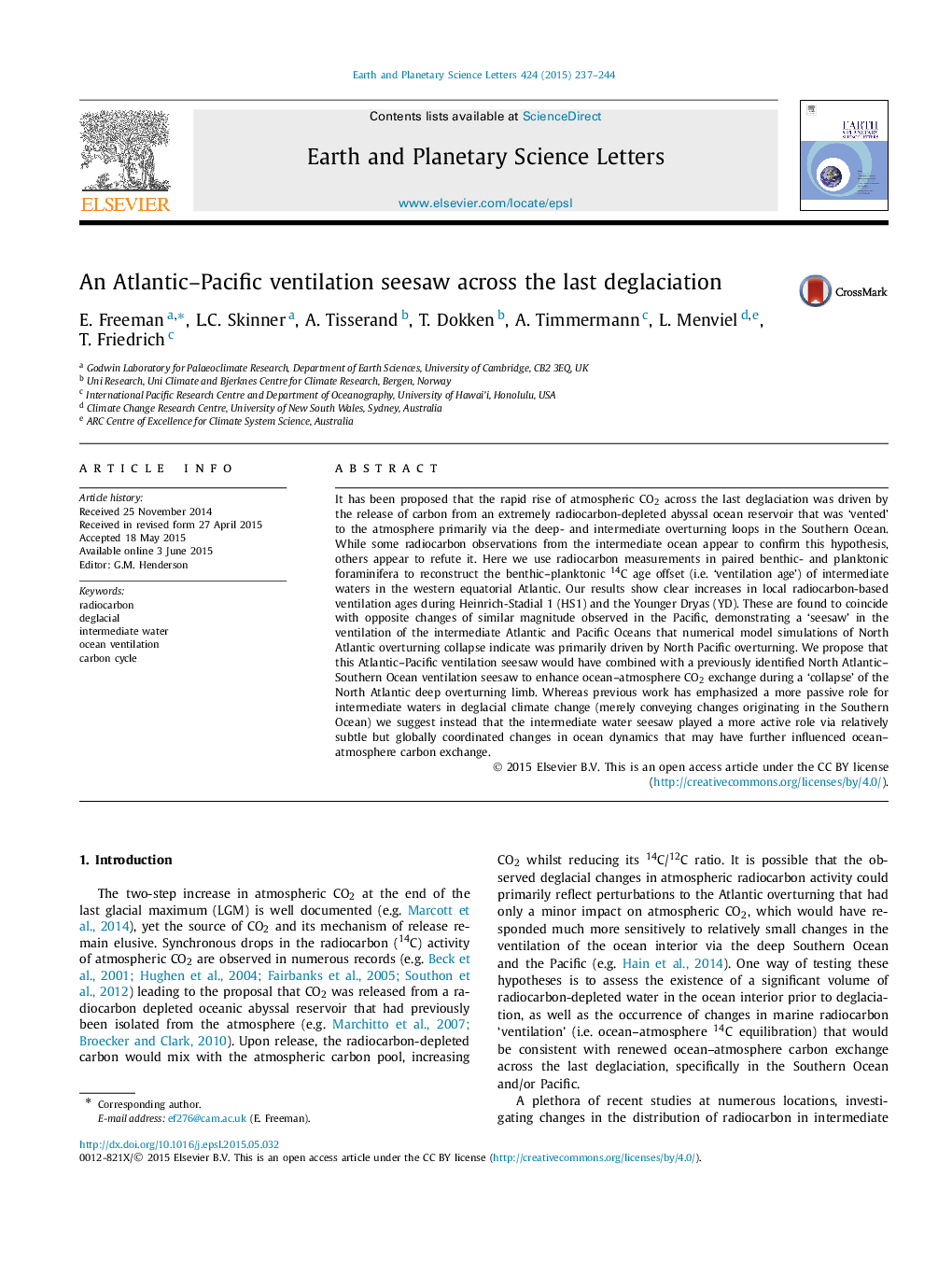| Article ID | Journal | Published Year | Pages | File Type |
|---|---|---|---|---|
| 6428244 | Earth and Planetary Science Letters | 2015 | 8 Pages |
â¢Atlantic intermediate-water ventilation decreases during HS1 and the YD.â¢An Atlantic-Pacific ventilation seesaw operated over the last deglaciation.â¢A role for Pacific intermediate-water ventilation in deglacial CO2 rise is implied.
It has been proposed that the rapid rise of atmospheric CO2 across the last deglaciation was driven by the release of carbon from an extremely radiocarbon-depleted abyssal ocean reservoir that was 'vented' to the atmosphere primarily via the deep- and intermediate overturning loops in the Southern Ocean. While some radiocarbon observations from the intermediate ocean appear to confirm this hypothesis, others appear to refute it. Here we use radiocarbon measurements in paired benthic- and planktonic foraminifera to reconstruct the benthic-planktonic 14C age offset (i.e. 'ventilation age') of intermediate waters in the western equatorial Atlantic. Our results show clear increases in local radiocarbon-based ventilation ages during Heinrich-Stadial 1 (HS1) and the Younger Dryas (YD). These are found to coincide with opposite changes of similar magnitude observed in the Pacific, demonstrating a 'seesaw' in the ventilation of the intermediate Atlantic and Pacific Oceans that numerical model simulations of North Atlantic overturning collapse indicate was primarily driven by North Pacific overturning. We propose that this Atlantic-Pacific ventilation seesaw would have combined with a previously identified North Atlantic-Southern Ocean ventilation seesaw to enhance ocean-atmosphere CO2 exchange during a 'collapse' of the North Atlantic deep overturning limb. Whereas previous work has emphasized a more passive role for intermediate waters in deglacial climate change (merely conveying changes originating in the Southern Ocean) we suggest instead that the intermediate water seesaw played a more active role via relatively subtle but globally coordinated changes in ocean dynamics that may have further influenced ocean-atmosphere carbon exchange.
